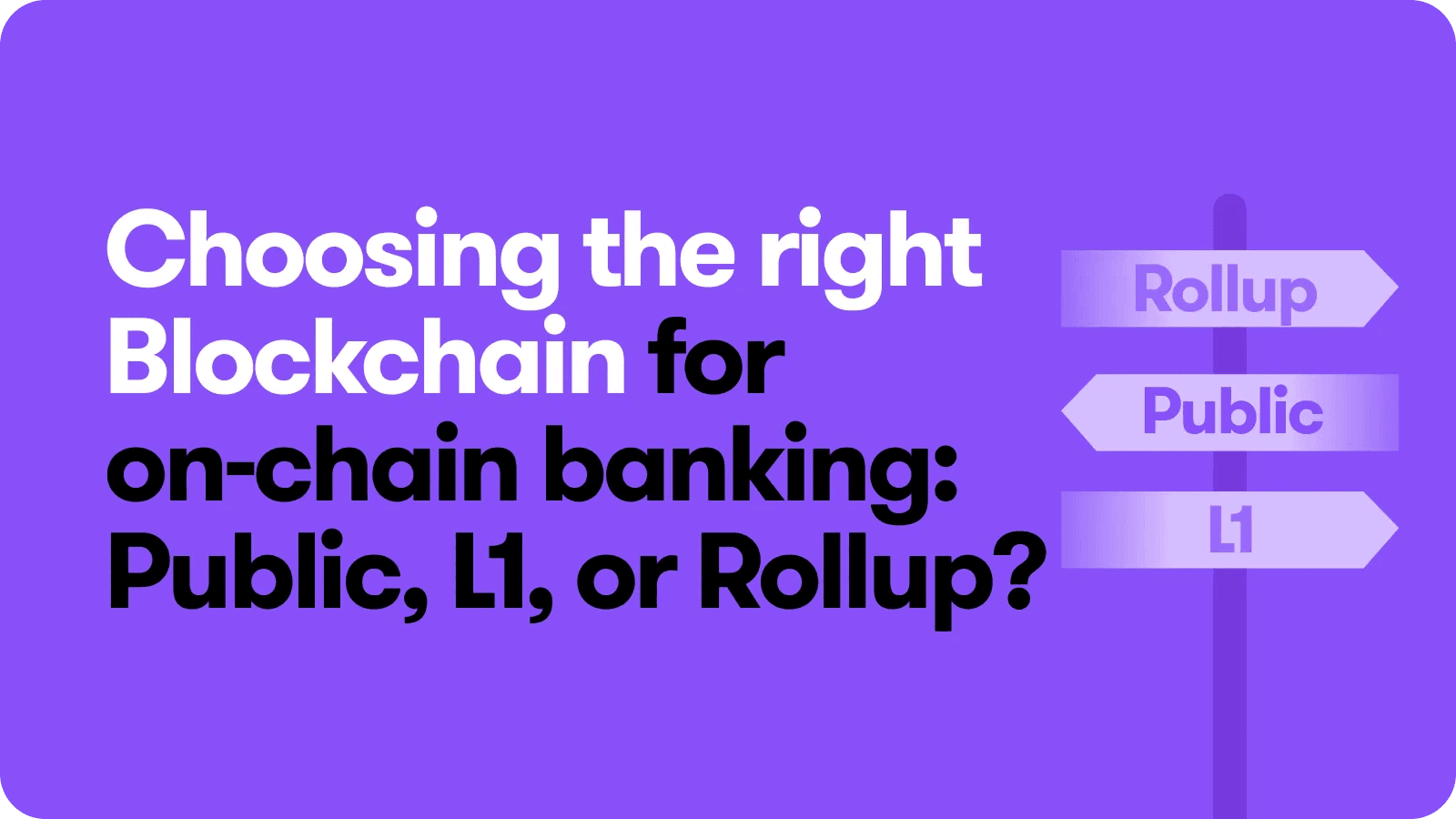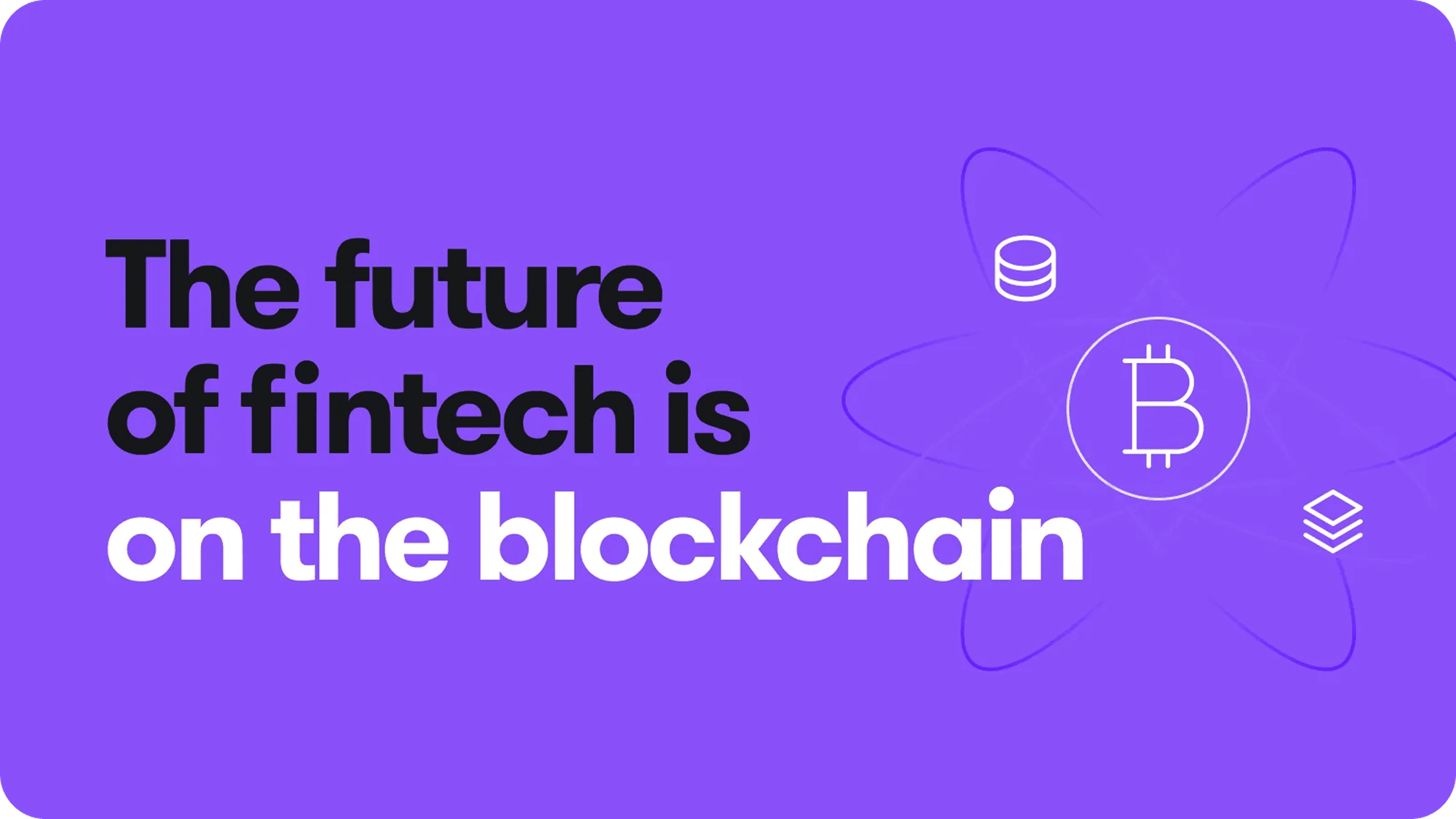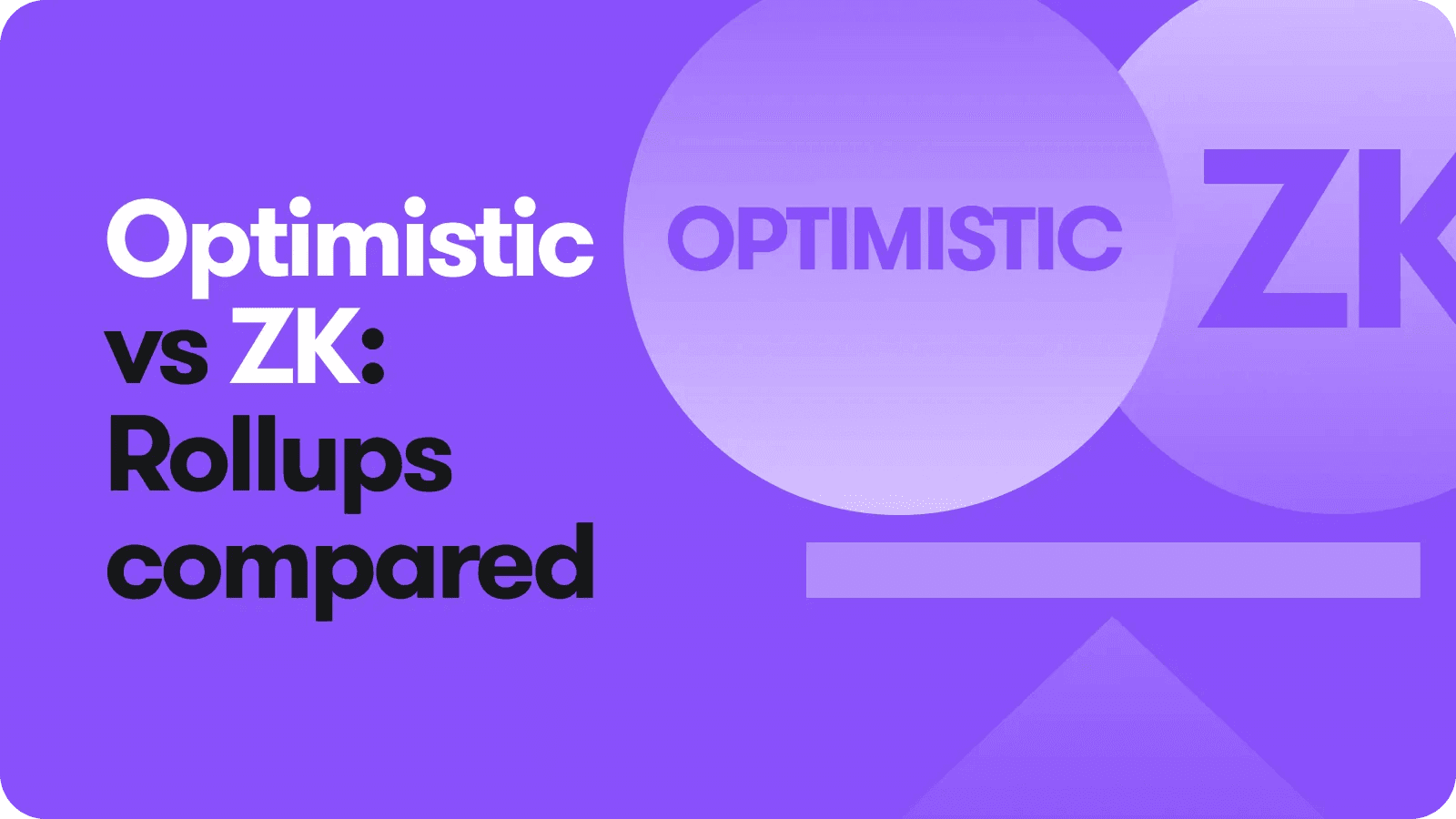
Comparing Optimistic or ZK Rollup Technologies and Their Ideal Applications
13 May 2025
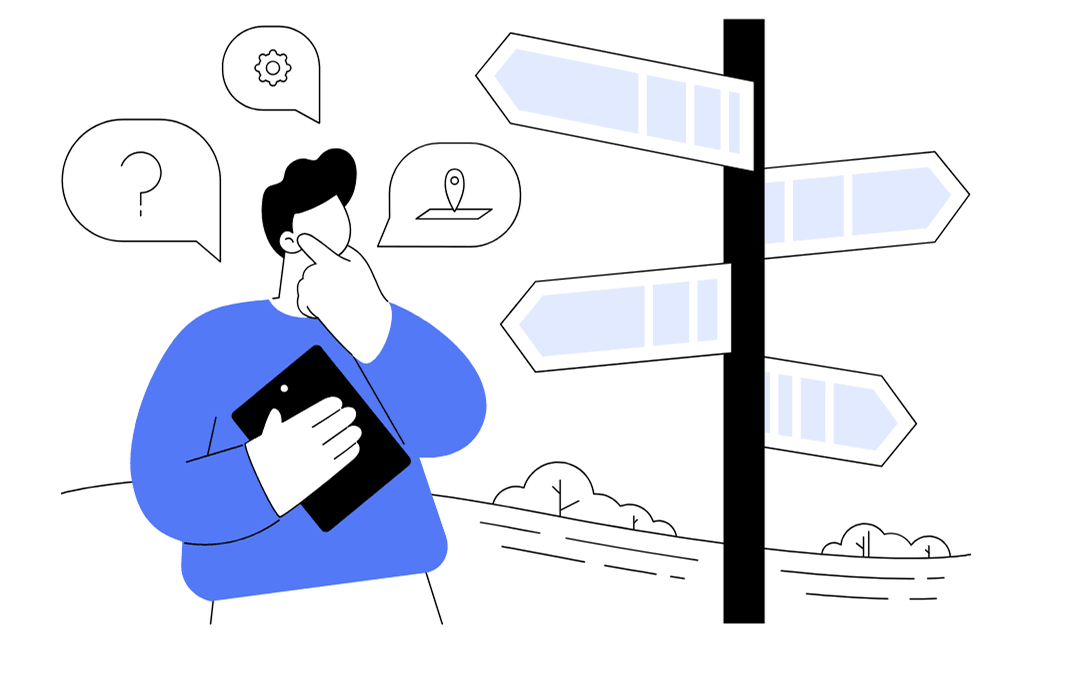
The scalability crisis in the Blockchain space is attributed to a simple paradox: the more useful blockchains become, the more unusable they get, with gas fees skyrocketing during peak demand. Think of the main layers such as Ethereum and Bitcoin like congested highways and the transactions like cars during the rush hour. The number of transactions is scaling exponentially day by day but the size of the highway remains limited. We simply need a solution to decongest this highway in the most efficient way.
Rollups as a Layer 2 solution are the best emerging solution to this scalability crisis and maybe the ticket to blockchain’s mass adoption as well. Rollups can further be categorised into two types: Optimistic Rollups and Zero Knowledge Rollups (ZK Rollups). Let’s discuss these in detail.
What are rollups?
So how exactly do these excellent solutions cater to our scalability crisis? Imagine that instead of every car trying to squeeze onto the highway, they go on the side roads where things are much faster. Periodically, a "summary report" of all the side road traffic is then sent to the main highway. This way, the main highway isn't clogged, and everyone gets where they need to go much quicker and cheaper.
These problem solving side roads resemble the rollups. So, rollups take a lot of the work off the main blockchain and only report the important results back to it, making everything faster.
To sum up, Rollups have the job of executing transactions off-chain, then bundling and submitting transaction data to the Layer-1 blockchain. In this manner, the pressure on the main chain is reduced remarkably, leading to increased transaction throughput and lower fees while retaining security.
Some of the projects which leverage this technology for scaling are Arbitrum, Optimism, Base, zkSync, Polygon zkEVM, StarkNet. These projects span various applications, including DeFi, NFTs, and general Ethereum scaling, showcasing the diverse adoption of Layer-2 solutions. Businesses have the option to build custom rollups using either the Optimistic or ZK stack. The following sections will guide you through this decision.
Optimistic rollups
Continuing with our highway analogy, consider that the side road workers (side road representing the rollup) are generally trusted, and they submit their summary report of calculations to the main highway. Everyone on the main highway optimistically believes their report. However, a "challenge period" exists, allowing anyone to contest the results by providing proof of errors. If an error is proven, the incorrect transactions are reversed. This system prioritizes speed by assuming correctness, but the necessary challenge period creates a delay before transactions are considered fully finalized on the main highway, acting as a safety net.
The category of side roads considered above is that of the Optimistic Rollups. These rollups take a more straightforward approach to scaling blockchains—they assume all transactions are valid unless someone proves otherwise. This "trust but verify" method introduces a challenge period (typically 7 days) where suspicious activity can be flagged, making the system secure but slightly slower compared to ZK Rollups. While transactions aren’t finalized instantly, the trade-off is a simpler, more cost-effective system that’s easier to develop and deploy.
Optimistic Rollups power some of the most widely used Layer 2 networks today—like Arbitrum, Optimism, and Base. These projects drive the maturity of the Optimistic Rollup ecosystem, offering developer-friendly tools and robust documentation, and making it easy for developers to build and deploy applications.
Optimistic Rollups provide a cost-efficient solution for applications with high transaction volumes and low-value transactions, especially when instant finality isn’t essential. They’re ideal for trusted environments with low dispute risk, such as corporate loyalty programs and DAOs.
A great example is Reddit, which needed to scale its reward system for over 50 million users. Since the rewards involved tiny transactions, low fees were essential. Additionally, the platform could tolerate a 7-day withdrawal delay, and required a solution that could seamlessly integrate with its existing infrastructure. Given these conditions, Reddit chose Arbitrum Nova, an Optimistic Rollup optimized for such use cases.
Similarly, DAOs such as GMX DAO, Treasure DAO, and many others have deployed their protocols on Optimism and Arbitrum, taking advantage of the scalability and cost-efficiency offered by the Optimistic Rollup architecture.
Here are a few more examples of dApps that have benefited from deploying on Optimistic Rollups:
Lyra, a decentralized options trading platform, is natively built on Optimism, leveraging its low fees and fast confirmations to enable efficient pricing and trading of options.
Chainlink launched its oracles on Arbitrum to support dApps running on Arbitrum’s Layer 2, helping ensure reliable, scalable data feeds in a cost-effective environment.
Beethoven X, a DeFi platform and DEX, uses Optimism to offer more accessible liquidity provision and token swaps — particularly beneficial for smaller traders and liquidity providers.
Zero-Knowledge rollups
Now let’s assume that the side road workers not only provide a summary report of their calculations to the main highway, but also a complex mathematical "proof" that everything they did is absolutely correct. This proof, like an unbreakable lock, guarantees the accuracy of the report. Because of this proof, everyone on the main highway can instantly verify the calculations without any need for a "challenge period," leading to much faster finality.
This case of side roads mentioned above resembles the ZK-rollups. These rollups are ideal for applications demanding high speed and immediate confirmation. Furthermore, the mathematical proofs inherently hide the details of the transactions, making ZK-rollups particularly well-suited for applications prioritizing privacy. However, generating these complex proofs requires significant computational resources, which in turn leads to higher costs and increased complexity in execution.
Major projects like zkSync, Starknet, and Polygon are already using this technology to power the next generation of blockchain applications.
ZK rollups cater perfectly to dApps requiring real-time settlement for high-frequency trading and cross-border transfers in the sector of finance and payments, enabling businesses to process transactions in seconds as opposed to days.
A notable example in the financial sector is J.P. Morgan, one of the world’s leading banks, which aimed to enhance its banking services using blockchain technology. To achieve this, it needed a solution that could support instant settlement for both domestic and cross-border transactions, comply with strict financial regulations, and preserve client confidentiality. To meet these demands, J.P. Morgan adopted a ZK-based stack in the development of its blockchain platform, Kinexys.
Beyond the financial sector, ZK Rollups offer significant advantages in identity verification, thanks to their ability to confirm credentials like age or nationality without revealing underlying personal information. This same feature is leveraged in regulatory technology, enabling companies to prove compliance without disclosing private data.
The gaming industry leverages ZK Rollups — such as Immutable X — to build scalable ecosystems capable of handling millions of micropayments and NFT trades with fast execution and zero gas fees.
Another great use case for ZK Rollups is supply chain management platforms to enhance transparency, confirm product authenticity, and validate ethical sourcing through end-to-end traceability. For example, Walmart has already applied the ZK technology to manage its food supply chain.
How to Choose the Right Rollup for Your Business?
When building your own rollup, it’s crucial to choose the right stack — Optimistic or ZK — based on your goals.
If you’re developing an app-specific chain, such as a corporate supply chain platform, focus on the specific needs and constraints of your use case.
On the other hand, if you’re building a general-purpose chain meant to attract external developers, consider what types of dApps you want to support and what their performance, security, and compliance requirements might be.
For applications demanding near-instant transaction finality like real-time payments or high-frequency trading, ZK-Rollups are a better choice due to their cryptographic proofs enabling immediate settlement.
ZK-Rollups are particularly well-suited for applications that handle private financial data, sensitive business transactions, or personal identity verification.
They also offer strong advantages for businesses operating in highly regulated industries — such as banking, healthcare, and international trade — by providing an audit-friendly framework that ensures compliance without compromising data privacy.
Thus, ZK Rollups are more advanced from a technological standpoint, offering powerful features like instant finality, enhanced privacy, and support for regulatory compliance. However, this sophistication comes with higher costs and increased complexity in deployment compared to Optimistic Rollups, which are easier to implement.
If you choose to go with a ZK Rollup, it’s essential to partner with an experienced implementation team that can manage complexity of deployment and ongoing maintenance in a cost-efficient manner — while ensuring high throughput, scalability, and robust security.
With deep expertise in zero-knowledge technology and a proven track record, Gateway.fm helps teams navigate the complexity of ZK Rollup deployment, ensuring a smooth, secure, and scalable launch.
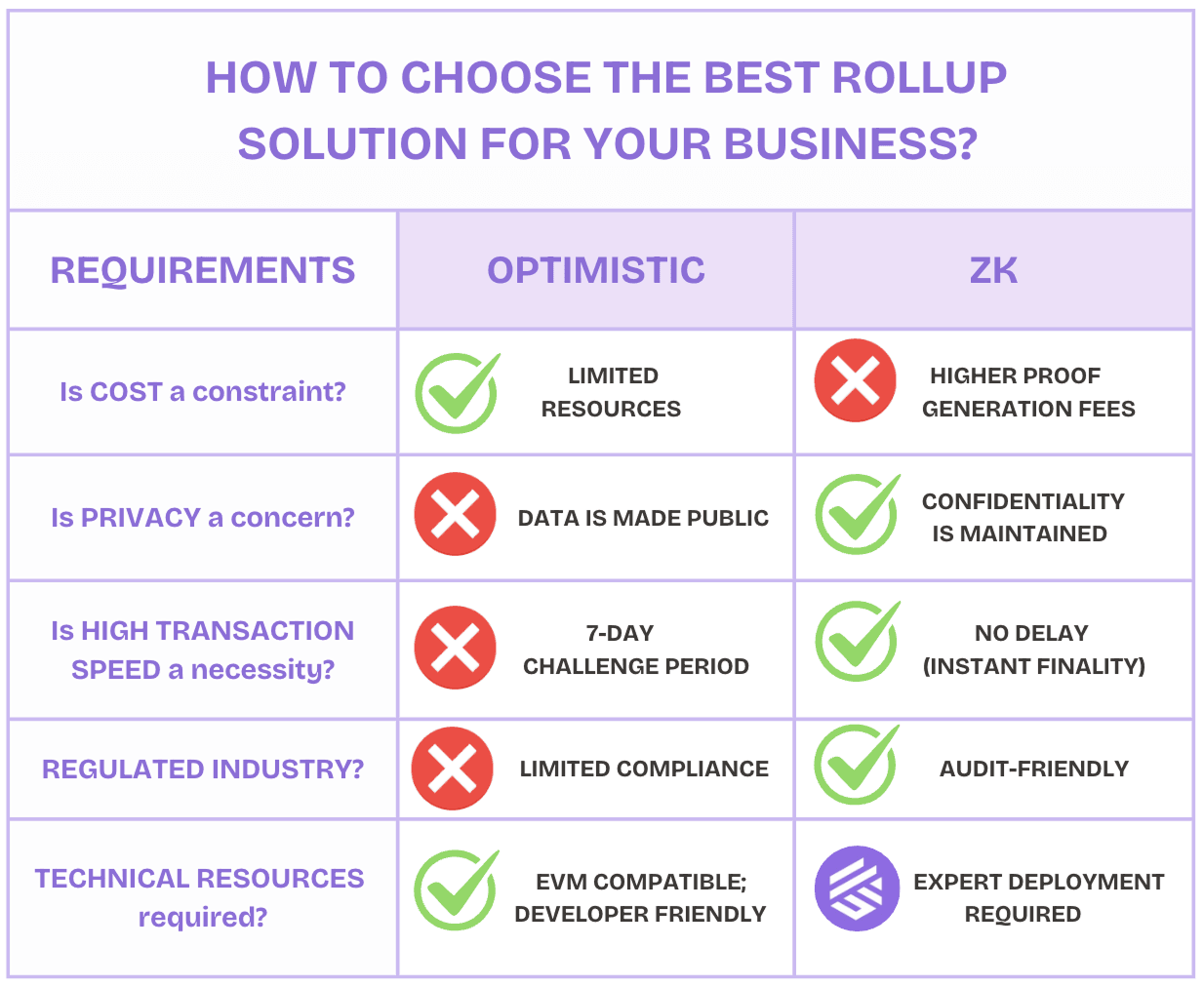
The Future: Will It Be ZK vs Optimistic or ZK+ Optimistic?
ZK-Rollups, with their instant finality and privacy-preserving capabilities, are drawing more and more attention. On the other hand, Optimistic Rollups, with their simplicity, continue to dominate in applications, where cost-efficiency and ease of development are the key parameters of employability.
However, the dilemma isn’t which one will win, but how they’ll work together to redefine the blockchain landscape and thus the most exciting possibility lies in ZK plus Optimistic hybrid models or multi-stack ecosystems, where the strengths of both technologies are combined, giving the best of the two worlds.
In such a model, Optimistic Rollups handle general-purpose computation, while ZK-Rollups provide privacy and instant settlement for specific use cases—this collaborative future could unlock unprecedented scalability and flexibility for Ethereum and beyond. And we already are much ahead in this approach, thanks to the modular frameworks like Polygon CDK and OP Stack.
Conclusion: Practical Takeaway for Decision-Makers
Rollups, the promising side roads, offer relief, but the choice between the "trust-but-verify" optimistic lanes and the mathematically proven ZK expressways isn't a simple one. There's no one-size-fits-all; each route caters to different business vehicles and cargo. The most critical journey, however, is the one you begin: exploring these new avenues and selecting the stack for building a rollup solution that best aligns with your use case, budget, and timeline.
The intricacies of selecting and implementing the right stack for building up a rollup solution can prove a formidable challenge, consuming valuable resources and demanding specialized expertise. Therefore, the most strategic path forward involves entrusting this crucial undertaking to experienced infrastructure providers, like gateway.fm.
By placing this intricate process in our capable hands, you unlock a tailored rollup solution, precisely aligned with your business's unique requirements and available resources, paving the way for unprecedented scalability and growth.
Book a free call with your dedicated blockchain expert.
Other blog posts
Want to read more? Discover our other articles below!


